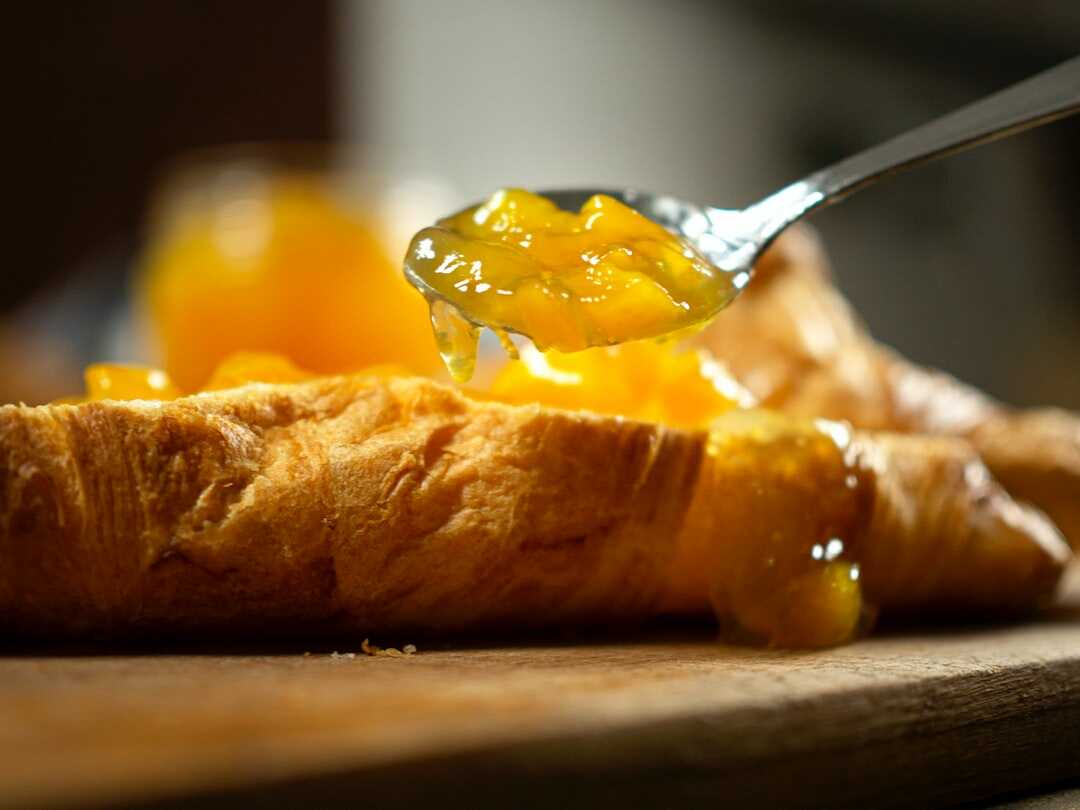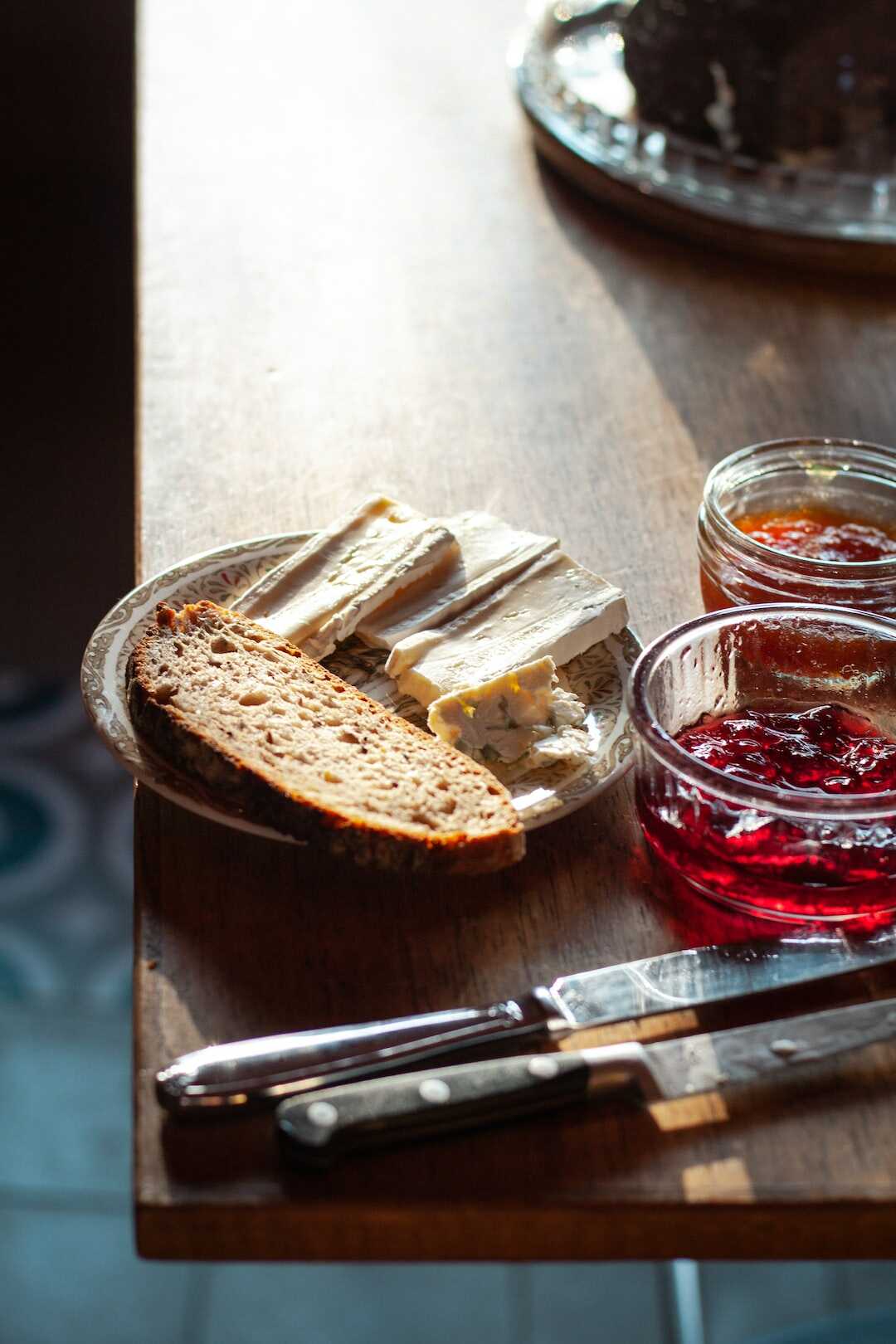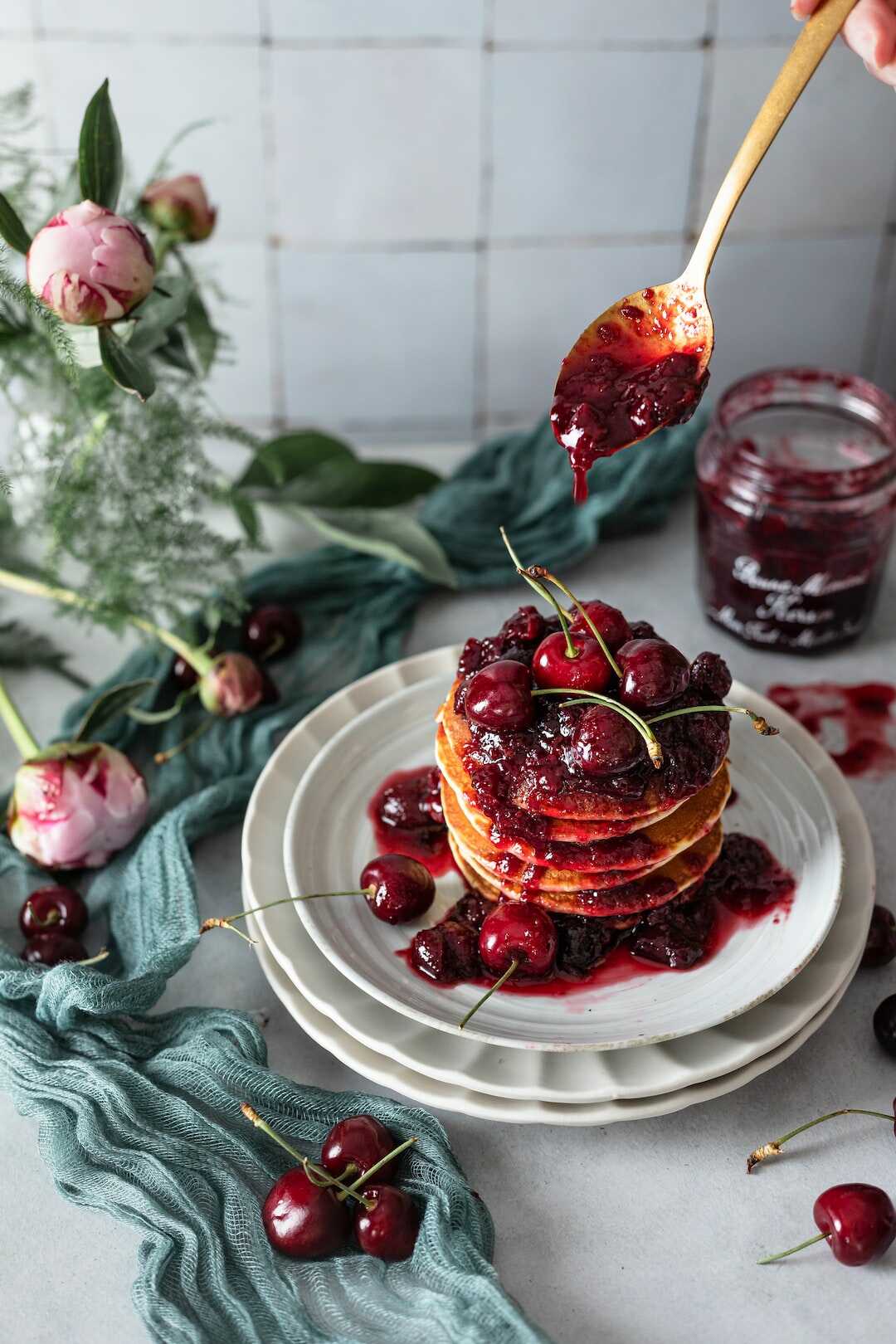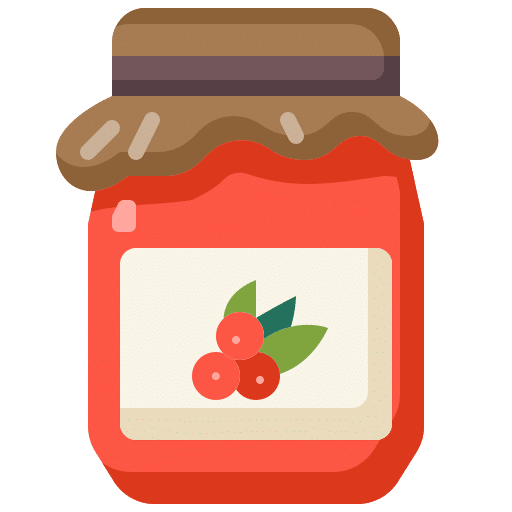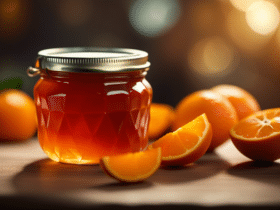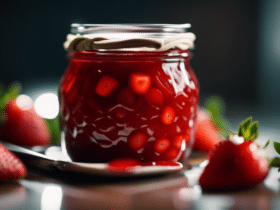The most commonly used white granulated sugar. Its grains are twice as large as conventional powdered sugar (or powdered sugar), which is also recommended.
How to calculate the percentage of fruit in a jam?

How to read the label of a jam?
- The calculation of the fruit is based on the initial weight of the ingredients. For example, 600 grams of fruit and 400 grams of sugar yield 60% fruit.
- The calculation of the fruits is carried out on the finished product. Cooking brings the initial kilogram of our example above down to around 800 gr.
How to recover a currant jelly that is too liquid?

If we feel that our jelly or jam does not have the desired consistency, we can make up for it by adding a little agar to the jam (cold, at the rate of about 2 grams per 1 kg of fruit) before reheating it again, stir well and wait for the miracle to work as the jam progresses. ..
What is the difference between granulated sugar and powdered sugar?

Crystallized sugar, obtained from the crystallization of syrup, is used to make jams, fruit jellies and to decorate cakes. It is the cheapest sugar. Powdered sugar, or powdered sugar, is ground into very fine particles and dissolves quickly, even when cold.
How to make powdered sugar from powdered sugar? Put the hardened sugar cube in a bowl and put it in the microwave for just 15-20 seconds. If necessary, repeat this step adding a few drops of water. You will then get powdered sugar, which you just need to knead lightly.
Why use powdered sugar for jam? Food and nutrition Jams Sugar, an essential ingredient in the manufacture of jams, preserves the fruit. … The most commonly used sugar is white granulated sugar. Its grains are twice as large as conventional powdered sugar (or powdered sugar), which is also recommended.
Which sugar to choose for baking? White sugar (beet or cane sugar): it is interested in the sweetening power and the discreet taste that can be integrated into all preparations. It is particularly suitable for making desserts, Viennese pastries or very delicate pastries.
How to calculate sugar content?

The label on the soda can reads: “Sugar content: 10.8 g per 100 ml of drink. »1) How much sugar can 33 cl contain? 2) How many sugar cubes of 6 g each do this? We therefore have: x = 330 x 10.8: 100 = 35.64 g.
Why macerate for the jam?

Promotes the preservation of jams and activates pectin. Pectin: this is what makes jams “set”, mixed with sugar. …After all, I don’t like to associate it with jams. Cooking in two stages: You can macerate the fruit in lemon juice and sugar the day before.
How to make jam quickly?
Basic recipe I like to let it rest for a few hours before starting the cooking in order to macerate the fruit in the sugar. For cooking, I put the copper bowl on high heat and cook for about 30 minutes, stirring regularly so that the jam does not stick.
How to avoid mold on homemade jam? To avoid spoiling sweet jams, a simple trick allows them to be kept longer. If a layer of mold appears on the top of the jar, simply remove the stale part and add the powdered sugar with a teaspoon.
How is jam made? Jam is a gelatinous mixture of sugar, pulp or puree of one or more types of fruit, most often obtained by reducing and candying certain fruits with an equivalent weight of sugar in a jam maker.
What type of fruit can I make jam with? Apricot, pineapple, banana, peach, nectarine, cherry, lemon, quince, fig, strawberry, raspberry, currant, kiwi, mango, chestnut, melon, mirabelle plum, blackberry, blueberry, orange, pear, apple, plum, plum, rhubarb € ¦ The choice of fruit jams is huge!
How much jam per day?
You don’t need to cut jam from your diet if it’s your morning treat. 10 g (= 2 teaspoons) of toast for breakfast or yogurt for lunch are quite acceptable as part of a balanced diet.
What is the best jam for health? The first place in our ranking is occupied by the Première Moisson jam. With only 30 calories and 7g of sugar per serving, their jam stands out.
Is jam good for health? They strengthen the resistance of the arteries, protect against free radicals (main source of cancer), have anti-inflammatory and anti-allergic properties (source). Blackberry, strawberry and more generally black fruit jams contain the highest levels of anthocyanins.
Does jam make you fat? Jam is a very sweet product. … This drop of sugar increases your hunger. Foods with a high glycemic index, such as jams, can therefore cause obesity because they stimulate the appetite.
Why is there mold on jam?
Like most foods, jams are not mold resistant. The fungus that forms on the surface is the result of a multiplication of bacteria that can be avoided by taking a few precautions.
How to recover bitten jam? It’s hard to make jam, but without trying, without profit 🙂 So try annealing it by adding sugar. You can also use lemon juice per kg of fruit or a few pieces of apple, very rich in pectin.
Why is there mold on jam? The fungus mentioned in jams is Aspergillus glaucus. The latter can cause allergies, but is not pathogenic, so after removing the mold, you can eat jam.
How to sterilize homemade jam? Wipe them with a clean cloth, close the jars and pour water over them in a large saucepan – you need at least 2.5 cm of water above the jars. Then bring to a boil. Leave the jars covered. If their capacity is 25 cl, count 15 minutes, and for 50 cl, count 20 minutes.
How to thicken jam?
It is necessary to open the jars, pour the jam into a saucepan and bring to a boil. From the first jolts, add the agar, mix and boil over low heat for 30 seconds. Count pennies. coffee agar for 1 kg of fruit.
What if the jam is too thin? To give your homemade jam more texture, simply add apple chunks, apple juice or apple pectin. For this, it is enough to heat the jam by adding apple pectin.
How to use agar agar in jam? Prepare the jam by boiling the fruit and the sugar, then leave to cool. Then add the agar-agar dissolved in a small spoonful of water, then bring the jam to a boil. Simmer for about 2 to 3 minutes, then immediately put in the jars.
How to replace jam sugar?
Just use a few ingredients such as: fresh or frozen fruit; a gelling agent such as agar-agar or chia seeds; natural sugar such as honey, fruit juice, coconut sugar, agave syrup and maple syrup.
How to replace special jam sugar? The sugar is then replaced by a healthy and natural sweetener such as eg. honey, agave syrup, birch sugar, coconut sugar, maple syrup.
What is the difference between sugar and jam sugar? Powdered sugar, or powdered sugar, is ground into very fine particles and dissolves quickly, even when cold. It is used for everything: pastries, desserts, entremets, ice cream. Special jam sugar or gelling sugar is powdered sugar with 0.4% pectin and 0.6 to 0.7% citric acid.
How to replace gelling sugar? Use agar-agar, a natural vegetable-based, tasteless gelling agent. Here is a delicious elderberry jelly (therefore without pectin) made with 4 grams of agar per liter of sweetened liquid.
Which spice to replace sugar?
Cinnamon, nutmeg, star anise, vanilla, mint, basil… They will flavor fruit desserts and give a naturally sweet taste to hot drinks, yogurts and sugar-free pastries, madeleines, muffins and other biscuits.

